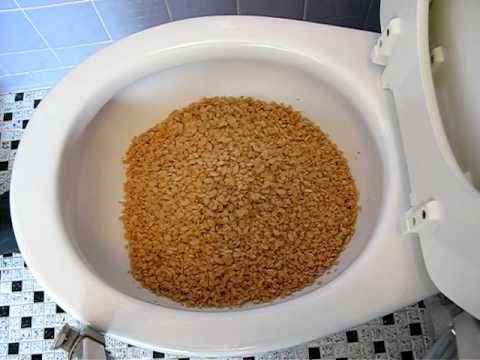On this page in the next paragraphs you will find more extremely good guidance regarding Think Twice Before Flushing Food Down Your Toilet.

Intro
Many people are typically confronted with the problem of what to do with food waste, particularly when it involves leftovers or scraps. One common concern that arises is whether it's alright to purge food down the commode. In this write-up, we'll delve into the reasons why people might consider purging food, the consequences of doing so, and alternate techniques for appropriate disposal.
Reasons that individuals might take into consideration purging food
Lack of recognition
Some people might not know the prospective injury caused by purging food down the toilet. They may erroneously think that it's a harmless practice.
Convenience
Flushing food down the bathroom may feel like a fast and very easy solution to getting rid of undesirable scraps, specifically when there's no nearby trash can offered.
Idleness
In some cases, people may just select to flush food out of sheer negligence, without thinking about the effects of their activities.
Repercussions of flushing food down the bathroom
Ecological effect
Food waste that ends up in waterways can contribute to air pollution and injury marine ecological communities. Furthermore, the water utilized to flush food can stress water sources.
Plumbing issues
Purging food can bring about stopped up pipes and drains pipes, triggering costly pipes repair services and hassles.
Sorts of food that must not be flushed
Coarse foods
Foods with fibrous textures such as celery or corn husks can get entangled in pipes and trigger blockages.
Starchy foods
Starchy foods like pasta and rice can take in water and swell, resulting in obstructions in pipes.
Oils and fats
Greasy foods like bacon or cooking oils should never ever be purged down the bathroom as they can solidify and cause clogs.
Proper disposal approaches for food waste
Utilizing a garbage disposal
For homes equipped with garbage disposals, food scraps can be ground up and purged with the plumbing system. Nonetheless, not all foods are suitable for disposal in this manner.
Recycling
Specific food packaging products can be recycled, lowering waste and decreasing environmental influence.
Composting
Composting is an environment-friendly way to take care of food waste. Organic materials can be composted and made use of to enrich dirt for horticulture.
The importance of correct waste management
Lowering ecological injury
Proper waste administration practices, such as composting and recycling, aid lessen pollution and protect natural deposits for future generations.
Securing plumbing systems
By staying clear of the technique of flushing food down the commode, homeowners can prevent costly plumbing repairs and preserve the stability of their pipes systems.
Verdict
Finally, while it might be alluring to purge food down the toilet for convenience, it is essential to understand the possible effects of this action. By taking on appropriate waste administration practices and getting rid of food waste responsibly, people can add to healthier pipes systems and a cleaner atmosphere for all.
FLUSH FOOD DOWN THE TOILET?
FLUSHING FOOD CAN CAUSE BLOCKED DRAINS IN YOUR HOME
All of the plumbing fixtures in your home are connected to the same sewer pipe outside of your home. This outdoor sewer pipe is responsible for transporting all the wastewater from your home to the Council sewer mains. Even small pieces of food that go down the kitchen sink can cause problems for your sewer. It should therefore be obvious that flushing larger bits of food, such as meat, risks a clog in either the toilet itself or the sewer pipes. Flushing greasy food is even more problematic because oil coagulates when it cools, coating the interior lining of your pipes.
THE TOILET IS NOT A BIN
Food isn’t the only thing that people shouldn’t be flushing down the toilet. People use the toilet to dispose of all kinds of things such as tampons, makeup wipes, dental floss, kitty litter and even underwear. Water goes to great lengths to educate residents about the high costs and stress placed on wastewater treatment systems simply from people flushing the wrong stuff down the toilet. It costs taxpayers millions of dollars each year, and homeowners thousands in blocked drain repairs.
FLUSHING FOOD IS A WASTE OF WATER
Flushing food is a waste of our most precious resource - water. In June this year Level 1 water restrictions were introduced to protect water supply from drought conditions. Much of New South Wales continues to be affected by prolonged drought with recent figures revealing up to 97 per cent of the state remains in drought. Depending on whether you have a single or dual flush toilet, every single flush uses between five and 11 litres of water. In the current climate this is a huge amount of water to be wasting on flushing food that should be placed in the bin (or better yet, the compost).
https://www.jabplumbingsolutions.com.au/blog/can-you-flush-food-down-the-toilet

We hope you enjoyed reading our part about Think Twice Before Flushing Food Down Your Toilet. Thanks for taking the time to read through our content. Remember to take a moment to promote this blog entry if you enjoyed it. Thank-you for going through it.
Schedule Your Service